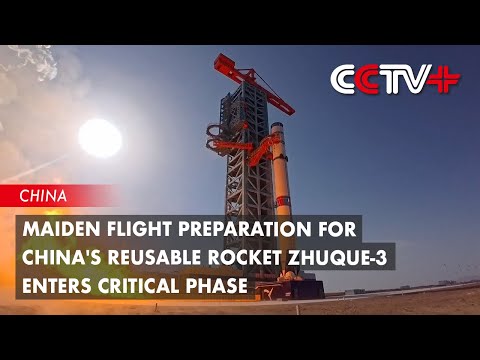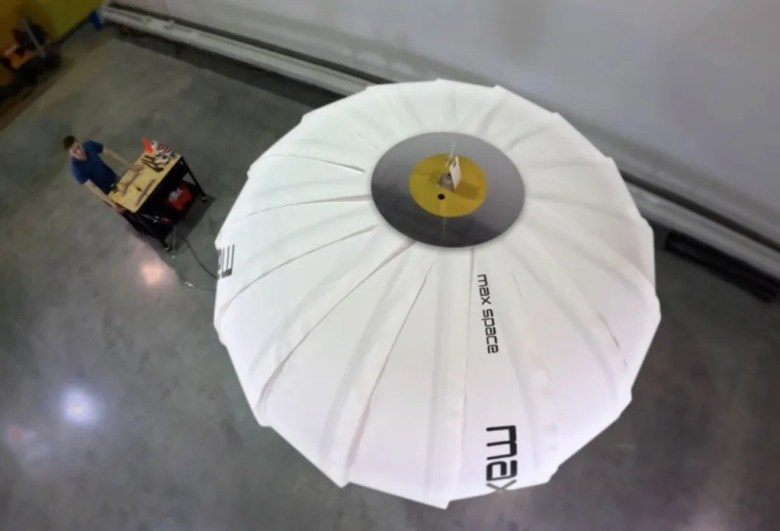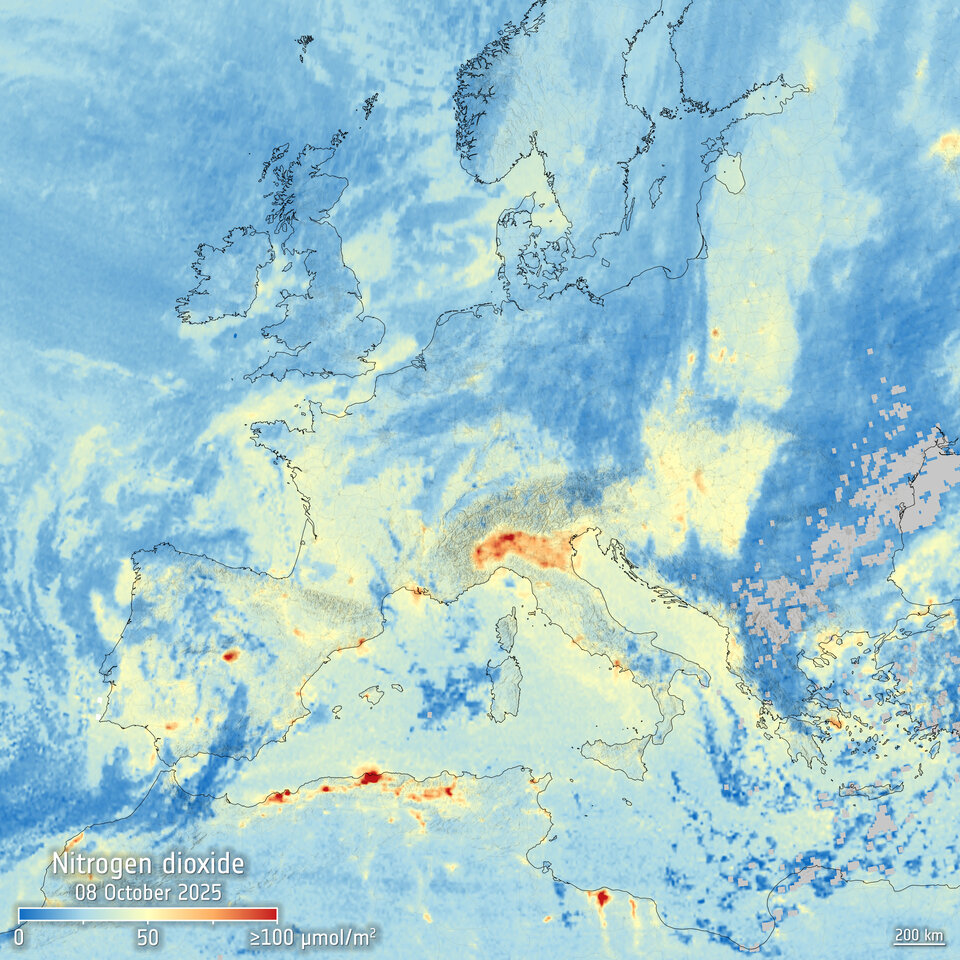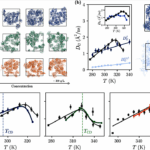Now Reading: Landspace begins final preparations for China’s first orbital launch and landing attempt
-
01
Landspace begins final preparations for China’s first orbital launch and landing attempt
Landspace begins final preparations for China’s first orbital launch and landing attempt

HELSINKI — Launch startup Landspace is in the final stages of preparations for the first launch of its Zhuque-3 rocket and a potentially landmark mission for China.
Landspace announced Oct. 20 that it had completed the first phase of its inaugural launch campaign of the Zhuque-3 rocket at the Dongfeng Commercial Space Innovation Test Zone at the national Jiuquan Satellite Launch Center, northwest China.
Teams conducted a full-scale propellant loading rehearsal of the Zhuque-3 and static fire test at launch pad 2 for methane-liquid oxygen rockets Oct. 18-20, Landspace said via its social media channels.
“The vehicle will next proceed with planned vertical integration rehearsal, before returning to the technical zone for inspection and maintenance in preparation for its upcoming orbital launch and first-stage recovery,” Landspace said.
The first Zhuque-3 is expected to carry a prototype of the reusable Haolong cargo spacecraft as part of a program for low-cost cargo delivery to the Tiangong space station. The launch, if all goes well, could lead to China’s first attempt to recover an orbital booster, a decade after SpaceX demonstrated a first successful first stage rocket landing with its Falcon 9.
The two-stage, 4.5-meter-diameter Zhuque-3 has a liftoff weight of about 570 metric tons and a total length of approximately 66 meters, with a first stage powered by nine Tianque-12A engines. Its payload capacity to low Earth orbit (LEO) is 21,000 kilograms when expendable, or up to 18,300 kg when the first stage is recovered downrange. Alternatively, it can carry 12,500 kg to LEO when returning to the launch site.
Launch likely in November
The time and date of the launch attempt is not yet known. No airspace closure notices—which would indicate a launch time in absence of an official statement—have so far been issued.
China is expected to launch the Shenzhou-21 crewed mission from Jiuquan spaceport Oct. 31, likely precluding launches of an untested rocket before that time. Additionally, the Shenzhou-20 crew, who will hand over control of the Tiangong space station to the incoming Shenzhou-21 astronauts, are expected to land Nov. 5 at the Dongfeng Landing Site near Jiuquan spaceport. Zhuque-3 may need to wait until after the astronauts are safely back on Earth before its launch attempt.
While the launch will be a first test flight, there will be a lot riding on the mission beyond the payload. Landspace is one of a number of companies aiming to demonstrate it can reliably launch batches of satellites for China’s megaconstellation projects, Guowang and Qianfan, and secure crucial launch contracts. Spacesail, which operates Qianfan, recently awarded Landspace and two competitors contracts to launch batches of its satellites.
China’s commercial landspace
Landspace is one of the first launch startups to have emerged following a Chinese central government decision in late 2014 to open up portions of the space sector to private capital, partly in response to developments in the U.S. such as the emergence of SpaceX.
Its first launch, using the solid propellant Zhuque-1, failed in October 2018. The company dropped the rocket and concentrated on the methane-liquid oxygen Zhuque-2 which, in July 2023, became the first launcher using that propellant mix to reach orbit, having failed on its first flight. The company suffered a failure of its upgraded Zhuque-2E in August, ending a run of four successful flights.
The company received $123 million from China’s National Manufacturing Transformation and Upgrading Fund for its rocket plans in December 2024. Landspace filed preliminary documents with Chinese regulators in late July, potentially eyeing an initial public offering (IPO) in early 2026.
Commercial competitors, including Space Pioneer, with its Tianlong-3 launcher, iSpace (Hyperbola-3), Galactic Energy (Pallas-1), CAS Space (Kinetica-2), Orienspace (Gravity-2) and Deep Blue Aerospace (Nebula-1), are working towards their own debut launches of new, liquid propellant rockets in the near future, some which are potentially reusable. State-owned CASC is also preparing for a debut launch of the reusable Long March 12A rocket.
Reusable rockets would help ease issues of using inland spaceports, as launches from which require expendable stages to fall to the ground, with drop zones requiring careful calculation and evacuation. The launch of the Shiyan-31 satellite from Jiuquan Oct. 13 saw a Long March 2D stage fall to ground in Guinan country, Qinghai, with the event captured by onlookers.
Stay Informed With the Latest & Most Important News
Previous Post
Next Post
-
 012024 in Review: Highlights from NASA in Silicon Valley
012024 in Review: Highlights from NASA in Silicon Valley -
 02Panasonic Leica Summilux DG 15mm f/1.7 ASPH review
02Panasonic Leica Summilux DG 15mm f/1.7 ASPH review -
 03From Polymerization-Enabled Folding and Assembly to Chemical Evolution: Key Processes for Emergence of Functional Polymers in the Origin of Life
03From Polymerization-Enabled Folding and Assembly to Chemical Evolution: Key Processes for Emergence of Functional Polymers in the Origin of Life -
 04How New NASA, India Earth Satellite NISAR Will See Earth
04How New NASA, India Earth Satellite NISAR Will See Earth -
 05And Thus Begins A New Year For Life On Earth
05And Thus Begins A New Year For Life On Earth -
 06Astronomy Activation Ambassadors: A New Era
06Astronomy Activation Ambassadors: A New Era -
07SpaceX launch surge helps set new global launch record in 2024





















